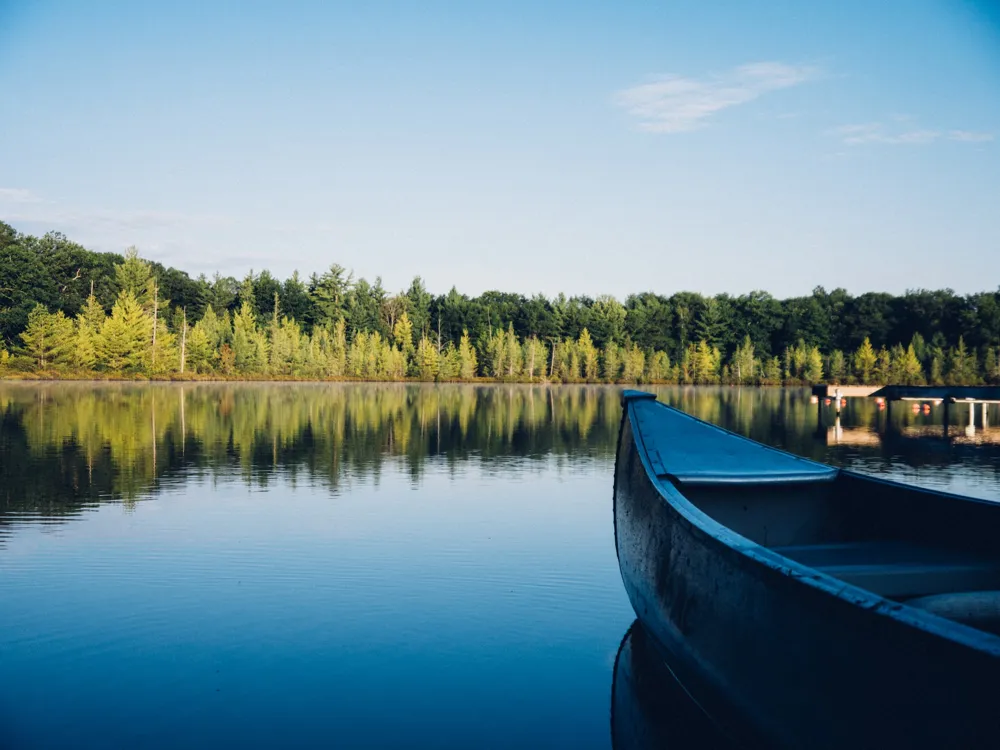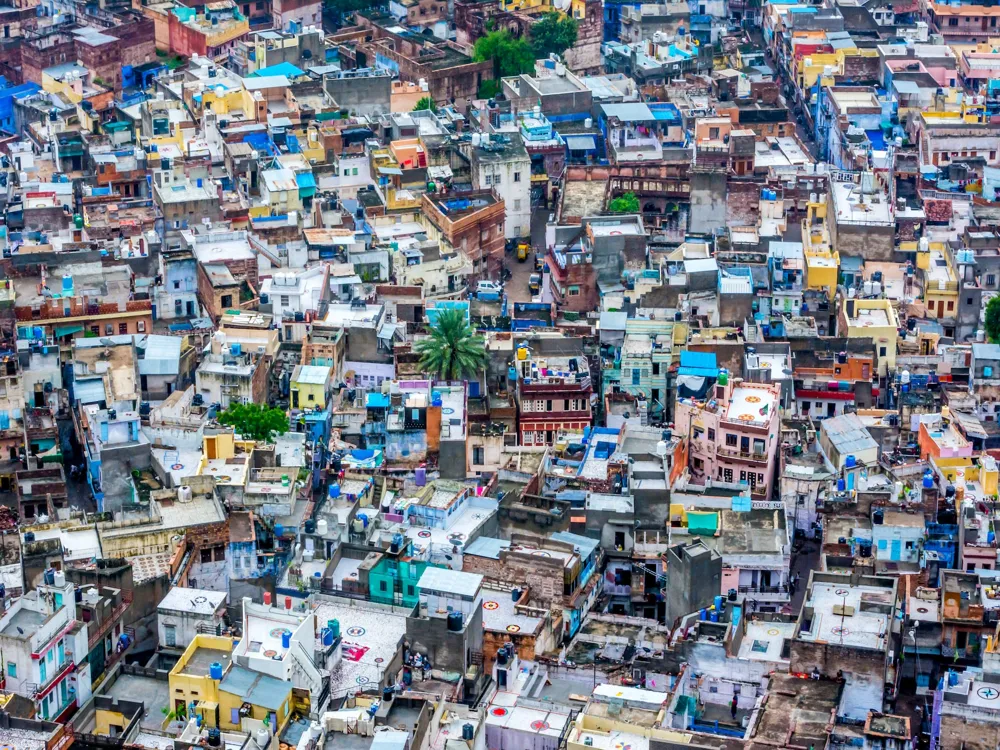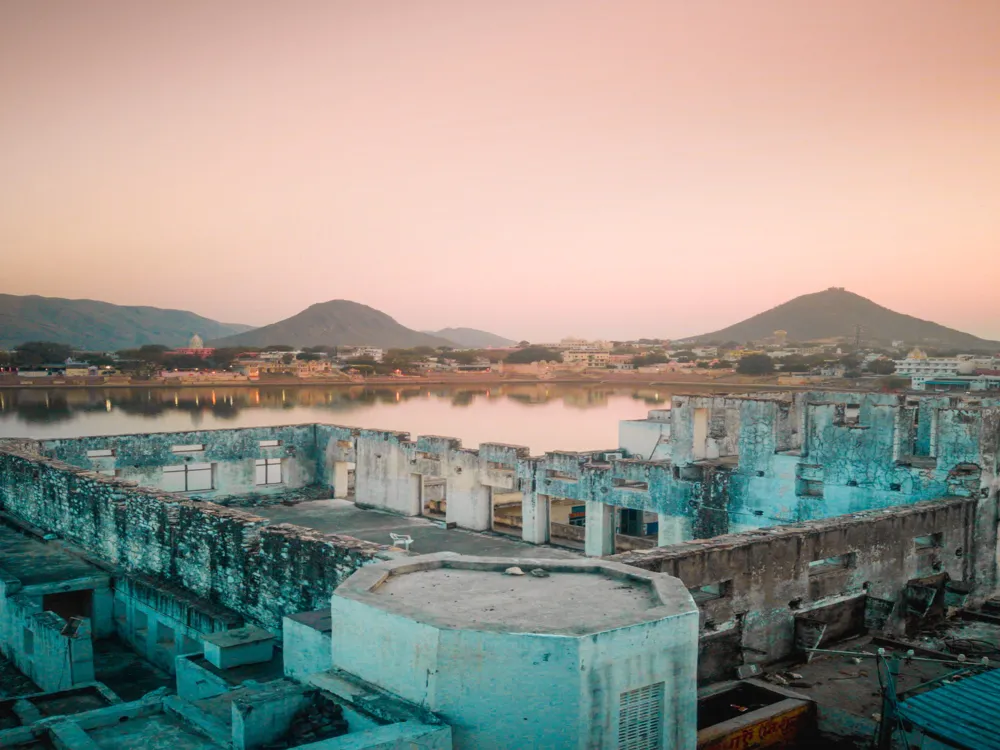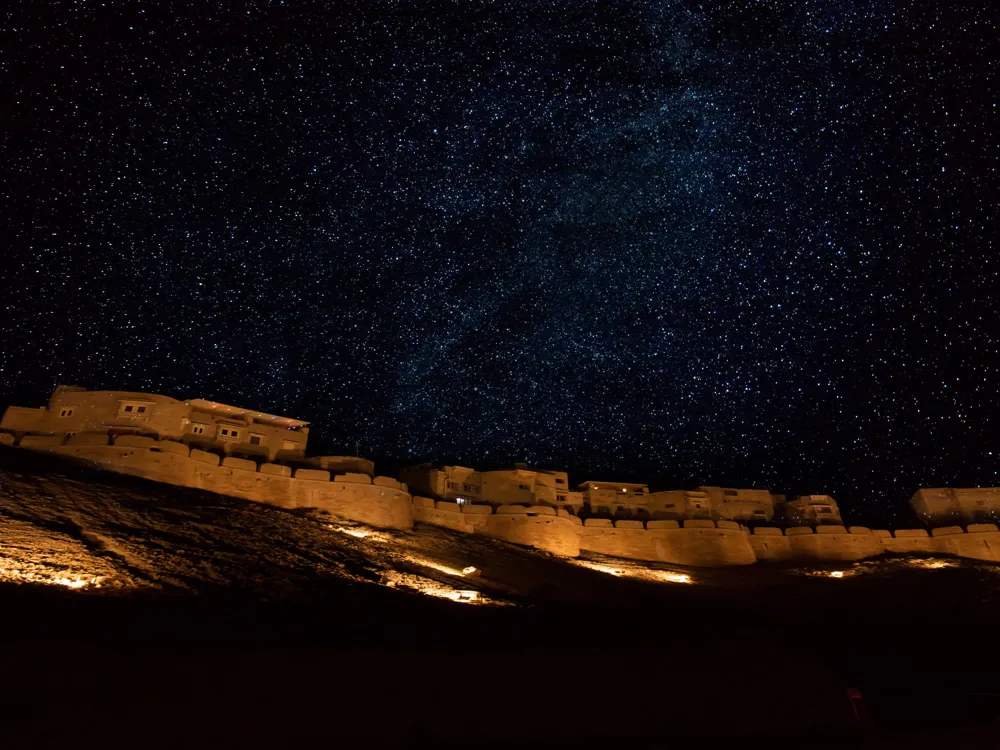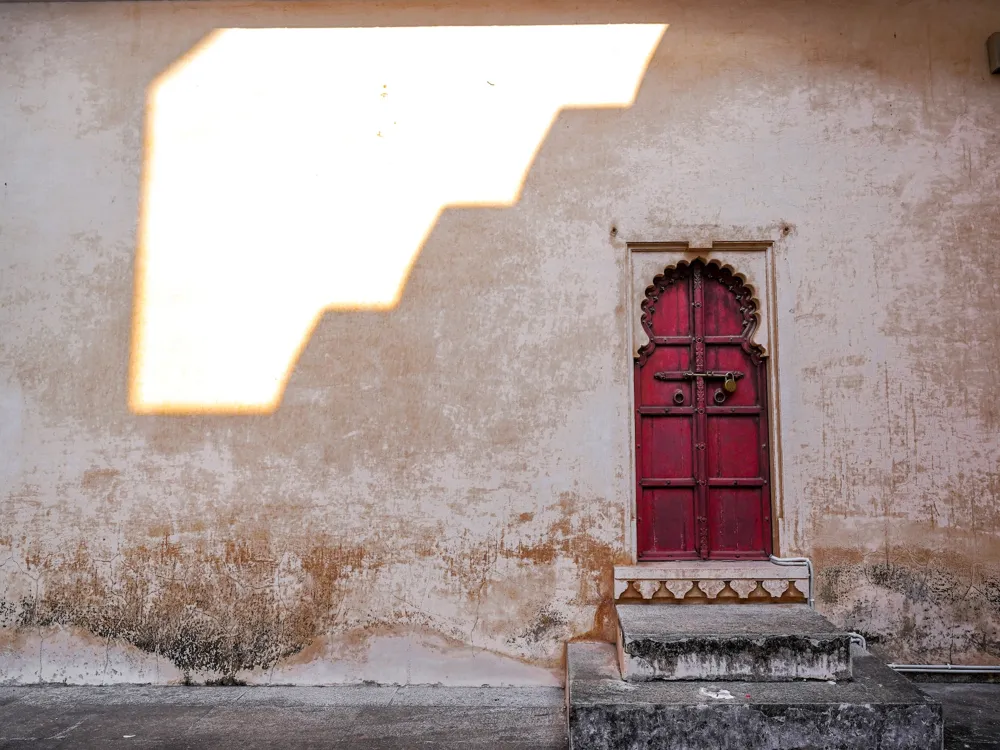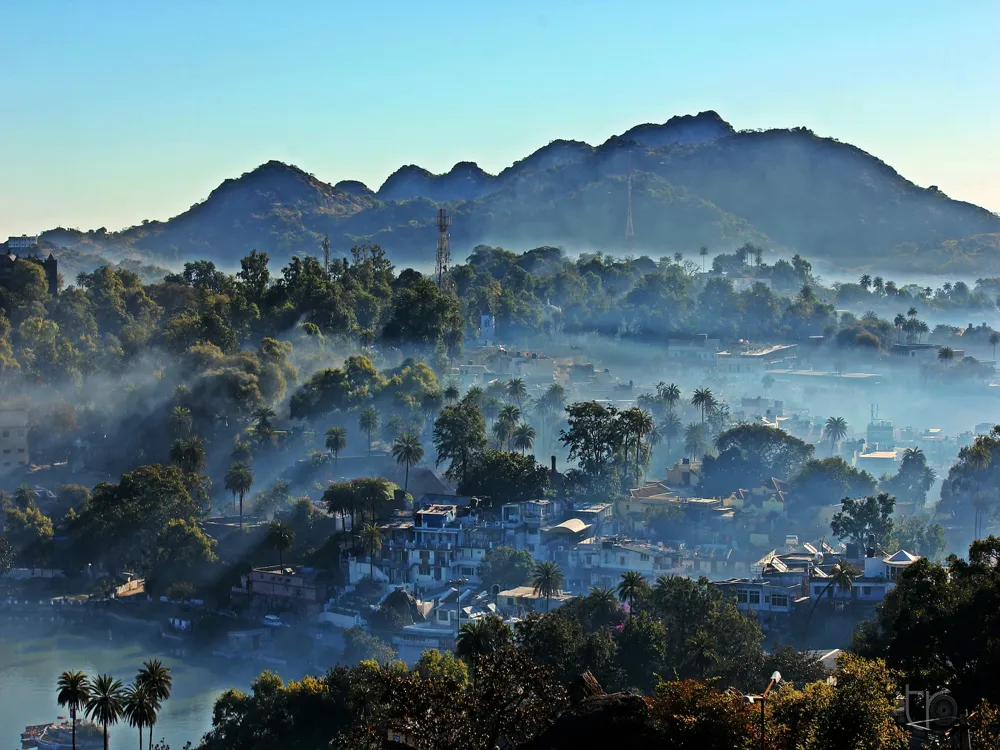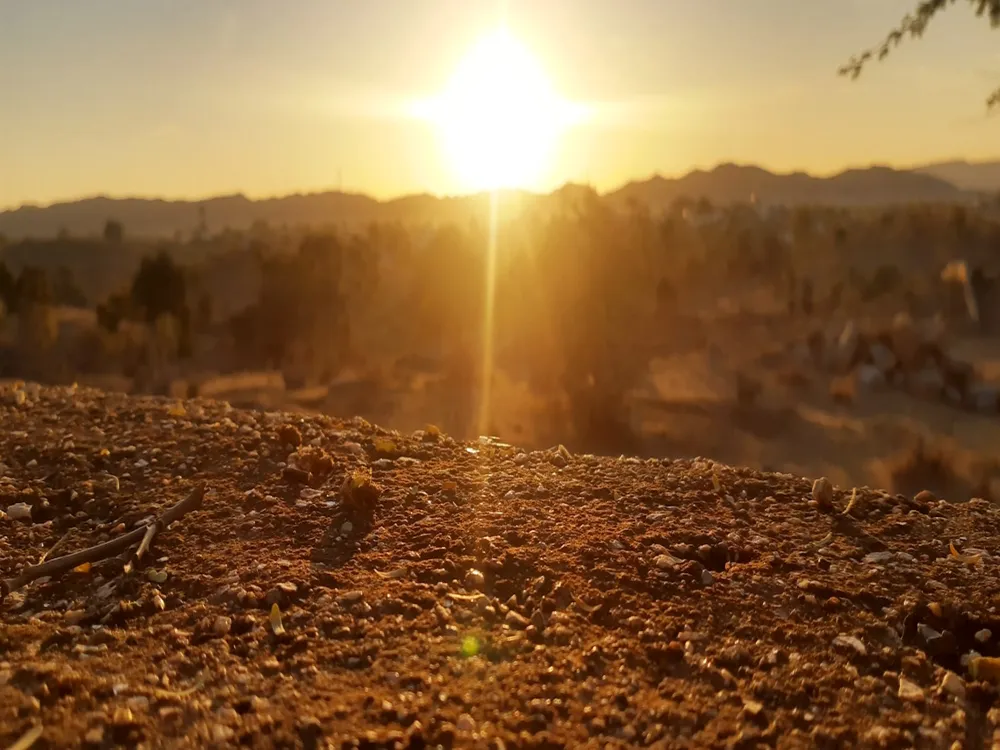Nestled in the historic city of Jodhpur, Rajasthan, the Ranisar Padamsar twin lakes are a testament to the city's rich history and cultural heritage. Constructed in the 15th and 16th centuries, these adjacent lakes were built to conserve water, a precious resource in the arid region of Marwar. Ranisar Lake, commissioned by Queen Jasmade Hadi, wife of Rao Jodha, the founder of Jodhpur, and Padamsar Lake, built by Queen Padmini, wife of King Ratan Singh, stand as symbols of the queens' commitment to their people's welfare. The lakes, surrounded by rugged terrain and imposing structures, are a stunning sight and offer a serene escape from the bustling city life. The architectural brilliance of Ranisar Padamsar is evident in its intricate design and sustainable construction. Built using traditional techniques, the lakes are a marvel of ancient engineering, showcasing the expertise and foresight of their creators. The stepwells or 'baoris' near the lakes are another architectural highlight, providing an efficient system for water storage and usage. The harmonious blend of functionality and aesthetic appeal makes Ranisar Padamsar a must-visit destination for history enthusiasts and nature lovers alike. The architecture of Ranisar Padamsar reflects the ingenious water conservation methods of ancient Rajasthan. These man-made lakes were strategically constructed to collect rainwater from the nearby rocky hills, ensuring a steady water supply throughout the year. The lakes' design includes stone embankments to prevent erosion, and intricately carved ghats (steps) leading down to the water, a common feature in traditional Indian water bodies. The ghats not only provided access to water but also served as social gathering spaces for the local community. The use of locally sourced materials, such as sandstone, in the construction of Ranisar Padamsar, adds to its aesthetic and historical significance. The lakes are flanked by ornate pavilions and temples, showcasing the exquisite craftsmanship of the time. The fusion of Rajput and Mughal architectural styles is evident in the detailed carvings, domed structures, and ornamental designs that adorn the site. This architectural amalgamation represents the confluence of cultures and traditions that have shaped Jodhpur's history. The ideal time to visit Ranisar Padamsar is during the cooler months from October to March. During this period, the weather in Jodhpur is pleasant, making it conducive for exploring the lakes and surrounding areas. Visitors are encouraged to dress modestly and respect local customs. As a site of historical and cultural significance, it's important to maintain decorum and avoid littering or causing any damage to the property. The picturesque landscape of Ranisar Padamsar offers ample opportunities for photography. Early morning and late afternoon light provide the best conditions for capturing the stunning architecture and serene waters. Ranisar Padamsar is easily accessible from various parts of Jodhpur. It is located near the Mehrangarh Fort, a prominent landmark in the city. Visitors can hire taxis, auto-rickshaws, or use public transport to reach the site. For those interested in a more immersive experience, walking tours are available that cover the lakes along with other historical sites in the vicinity. Read MoreOverview of Ranisar Padamsar in Jodhpur, Rajasthan
Architecture of Ranisar Padamsar
Tips When Visiting Ranisar Padamsar
Best Time to Visit
Respecting Local Culture
Photography Tips
How To Reach Ranisar Padamsar
Jodhpur Tourism
Ranisar Padamsar
Jodhpur
Rajasthan
₹ 12,000 onwards
View jodhpur Packages
Weather :
Tags : Lake
Time Required : Less than 1 hour
Entry Fee : No Entry Fee
Planning a Trip? Ask Your Question
Jodhpur Travel Packages
View All Packages For Jodhpur
Top Hotel Collections for Jodhpur

Private Pool

Luxury Hotels

5-Star Hotels

Pet Friendly
Top Hotels Near Jodhpur
Other Top Ranking Places In Jodhpur
View All Places To Visit In jodhpur
View jodhpur Packages
Weather :
Tags : Lake
Time Required : Less than 1 hour
Entry Fee : No Entry Fee
Planning a Trip? Ask Your Question
Jodhpur Travel Packages
View All Packages For Jodhpur
Top Hotel Collections for Jodhpur

Private Pool

Luxury Hotels

5-Star Hotels

Pet Friendly







